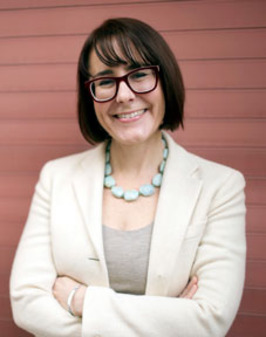Sexual Reassignment Surgery in Iran: A Q&A with Dr. Elizabeth Bucar
December 01, 2015 • By Elizabeth Bucar
Over the past century, new medical technologies have enabled extraordinary transformations of the human body. From a religious perspective, the ability to physically alter the body has raised deep questions about whether body modifications are enhancements or violations of human life. Elizabeth Bucar, Associate Professor of Philosophy and Religious Studies at Northeastern University, is exploring the divergent responses to sex reassignment surgery in two religious contexts: the Roman Catholic Church and the Islamic Republic of Iran. Her goal is to see what resources these traditions can offer today’s debates over body modification technologies.
Read a blog post by Elizabeth Bucar about religious attitudes toward sexual reassignment surgery here.
What was the spark for the research you’re pursuing for the Enhancing Life Project? Are these new questions, or an extension of past research, or both?
This has been my back burner research question since I was working on my dissertation in Iran ten years ago. I discovered by accident that sex change operations in Iran were legal, and at first I was shocked. And then I had to think about why I was shocked, which was simply that in a country where homosexuality is illegal and punishable by death, it seemed weird that perspectives on transgender issues would be so progressive. That was a chance to rethink my own assumptions about what the body and sexuality means in different cultural and religious contexts.
What drew you to a comparative project between the Roman Catholic Church and the Islamic Republic of Iran (which has Shi’a Islam as its official religion)?
When I decided to study religion, I didn’t want to be a moral theologian. I was baptized Catholic but never felt like enough of an insider to do that kind of confessional work. I wanted to work between traditions, comparatively. My question at the time was—who’s the bad guy for feminist ethics? And at the time, it seemed like Christianity and Islam. In particular, Pope John Paul II and Ayatollah Khomeini had received a lot of criticism from feminists. The Islamic Republic of Iran is a somewhat natural comparison with the Vatican because they’re both very hierarchical and legalistic. And then I noticed that Pope John Paul II and Ayatollah Khomeini were both addressing women in new and interesting ways. So that was how I got started. I really like working between two traditions—there’s so much we can learn by having more than one tradition on the table at the same time.
Why was it so surprising to learn that sexual reassignment surgery was legal in Iran? How does their view on transgender issues differ from that of the Vatican?
Well, on a very basic level, the Islamic Republic and the Roman Catholic Church are both very conservative on sexual issues. They don’t like sex outside marriage, they have strict gender roles for men and women, there’s a fairly inflexible position against homosexuality in both traditions. And yet, while the Roman Catholic Church sees sexual reassignment surgery basically as mutilation, the Islamic Republic doesn’t just sanction it legally, they support it financially, because they see gender identity as something internal. The Vatican is clear is that God always gets it right. Gender, sex, and sexuality all come together in one package, the body that we’re born with. But the Iranian clerics think sometimes there’s a mistake on the outside, and that true sex is an inner gender identity, so of course you’d want the body to conform to what’s inside.
What does “enhancing life” mean for you? In what way will your project contribute to the enhancement of life?
My research is about whether religious traditions view body modifications as enhancements of life or violations of life. It’s a question about which parts of the body make us human. Not every part is as morally important as every other part. What’s behind our investment in certain primary sexual markers? Religious traditions are great resources for this because they’ve been thinking about what the body means for such a long time. And I’m trying to show people that so many things they view as true or natural or right—like which parts of our body should be altered and which shouldn’t—actually come from somewhere. Those assumptions about what’s natural might be really different in another context and understanding those differences can be helpful for thinking through questions about medical technology today.
You don’t spend all of your time doing research and teaching! What’s your favorite place to travel, or the next place you’d like to go?
We have month-long intensive study abroad programs at Northeastern, and every year I teach comparative religion in the south of Spain. It’s great because I have this evidence of Christians and Muslims and Jews living together and fighting with each other for 700 years. And then the students and I walk part of the Camino de Santiago, a pilgrimage route in northern Spain. It’s incredibly rewarding and exhausting, but I always look forward to going back to Spain with my students.
Interview conducted and condensed by Amelia Thomson-DeVeaux